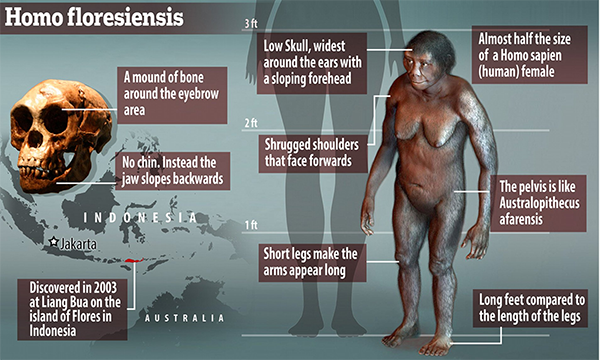Are Ancient “Hobbits” Actually Humans?
Fossils of a small “Hobbit” hominin were discovered in 2003 on an island in Indonesia. Called Homo floresiensis, paleoanthropologists have debated if this hominin is a distinct species from modern humans. The fossils reveal a unique blend of anatomical characteristics not seen in other hominins. These dwarves of the human species were about three and a half feet tall and had interesting morphology such as no chin, small brains, large front teeth, receding foreheads, and big feet.
The physical features of Homo floresiensis are reconstructed from fossil remains like this skull, the first specimen ever found.
It is unclear if these features mean that H. floresiensis was genetically distinct from other species. The fossils may represent members of another species, such as Homo erectus, that was subject to island dwarfing. They may even represent ancient Homo sapiens with growth disorders. The recent discovery of a fossilized jaw bone and teeth nearby have helped fill the gap between Homo floresiensis and its earlier ancestors, but it has not clarified the distinct relationships between species. Also unanswered is the question of how these hominins got to an isolated island and what they were like before living there.

Reconstructions of Homo floresiensis often depict them as ape-like, but the actual genetic relationship between them and modern humans is unknown.
By Autumn Knight (’23)

